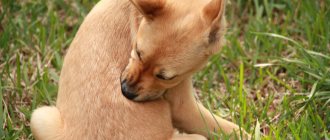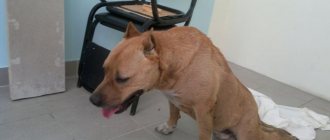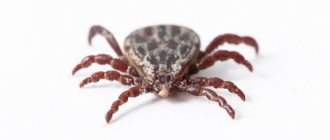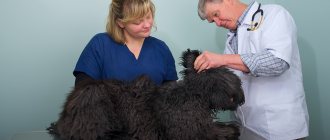A dog that has no health problems is always in a cheerful mood and has a good appetite. An adult animal needs to be fed up to 2 times a day; puppies and young dogs require more frequent feeding. In the case when your four-legged friend refuses to eat once, there is no need to panic, since one missed feeding is not critical. But if the animal refuses to eat for more than 1.5 or 2 days, the owner should sound the alarm, because perhaps his pet is seriously ill.
Why doesn't the dog eat? What could this be and what should I do?
A dog may refuse to eat for many different reasons. Many diseases can begin with this symptom.
If your dog has one of the following signs, then you better go to the veterinarian without delay:
- depression, lethargy
- elevated body temperature
- vomit
- diarrhea
- constipation
- change in the amount and color of urine
- discharge from the nose and/or eyes
- shortness of breath, difficulty breathing
- discharge from the noose in bitches
The reasons for a dog not eating are not necessarily due to illness. A dog's lack of appetite can be influenced by various factors:
- The dog has already managed to satisfy his hunger))). Check to see if the dog has eaten something secretly from you, for example, from the trash can, from the table, or by opening a bag of food on his own. This also happens. Interview relatives - perhaps someone has already fed the pet.
- Change in feed type and quality. Dogs are less sensitive to changes in diet than cats. However, they can also “sort” if the taste or smell of the food has changed. Therefore, think about what might have changed over the last 1-2 days in your pet’s diet. The transition from one type of food to another should be carried out gradually, over 7-10 days, by mixing the new food with the old one.
- Features of sexual behavior. During the period of active sexual heat, both males and females may experience a decrease in appetite. The reproductive instinct overcomes basic physiological needs











